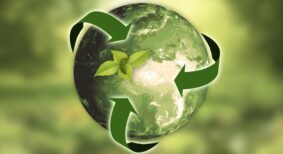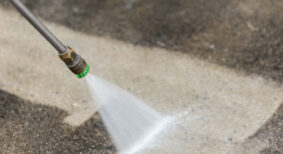It’s difficult to name a product that saw double-digit growth all through the recession and has continued to see double-digit growth since then. But if building owners and managers look around, they might see that such a product is right under their feet.
Luxury vinyl tile (LVT) has been a leading product in floor coverings for the past few years. While some LVT flooring may look luxurious, as its name implies, this is a tough floor covering that is exceptionally durable, has a surprisingly long lifespan, and provides a number of flooring solutions for commercial facilities. In fact, a 2015 Floor Covering News report identified the key commercial markets for LVT floors as:
- Corporate/office buildings, having a 45-per-cent share of all types of floors installed;
- Healthcare facilities, at 14 per cent; and
- Retail applications, at 13 per cent.
Other markets jumping on the LVT floor bandwagon include hotel/hospitality, government, military, education, and residential, where LVT floors were first introduced about 10 years ago. In addition to being durable, LVT floors are also relatively easy to install, easy to maintain, and cost-effective compared to the floors they are designed to mimic.
What is LVT?
LVT floors are sometimes called “look-alike” or “phony” floors. That’s because an LVT floor is made to look just like travertine, slate, marble, all types of hardwood (maple, cherry, oak, etc.), or even conventional tile. The more advanced versions even have surface “graining” and texturing so that, from a bit of a distance, they have even fooled some experienced designers.
LVT floors are the result of advanced computer technologies. They were introduced around 2006 and were first installed in residential settings. While different manufacturers may have different techniques to make LVT, the essence of the procedure is that computers are given images of “real” floors to copy. Some refer to this as a photographic replication.
Some LVT floors are made of 100 per cent vinyl, and others are a combination of vinyl and fillers. While they may look the same, the 100 per cent vinyl floor will likely prove to be much longer lasting and more durable.
Also, some LVT floors have a protective wear layer, or mil layer. If considering an LVT floor in a commercial facility, this mil layer is important. An LVT floor that is 40 mil will perform admirably, while an LVT floor that is 20 mil will work fine in an area of light to moderate traffic. Some products have a mil rating of 12 or less. These are fine for residential use but not commercial applications.
Cleaning and care
In most cases, LVT does not need to be sealed or finished. In fact, if a sealant or finish has been applied to the floor, it will eventually have to be stripped off, a labour-intensive and costly procedure.
While spills should be cleaned up as soon as possible, for the most part the appearance of these floors will not be marred by liquids. They can resist mould, stains, and most chemicals used in a conventional commercial setting. The floors also are considered moisture resistant, so humidity, which could affect hardwood and some other floors, is not a concern either.
LVT floors are relatively easy to clean — no special training needed. However, it is advised that some special cleaning tools be used. For instance, on a daily basis LVT floors can be swept or dust mopped to remove dry soils. Even better, soils can be removed using a backpack vacuum cleaner to pull the dry soils off the floor. Sweeping and dust mopping pushes these soils. Some soil is collected in the process; the rest is just pushed to another area of the floor.
Also, be wary of damp mopping these floors. As soil collects on the mop, it can spread from one area to another. Consider using a “dispense-and-vac”-type cleaning system, a machine that applies fresh cleaning solution directly to the LVT floor from a spigot at the bottom of a rolling trolley bucket. The solution is then spread and lightly brushed over the floor, and finally vacuumed up along with soils and contaminants.
While this cleaning process may seem involved, studies have found that it is much faster than conventional floor mopping. Expect to clean about 4,000 square feet with just one bucket of water and cleaning solution.
With construction and renovation booming in many parts of Canada and North America, many building owners and managers are thinking about floor coverings. As LVT floors gain ground, it’s important for building owners and managers to understand the product’s specific cleaning and care requirements. By establishing an effective maintenance program, building owners and managers can ensure that LVT floors achieve their expected lifespan.
Matt Morrison is communications manager for Kaivac, developers of the No-Touch® and OmniFlex Cleaning Systems.








